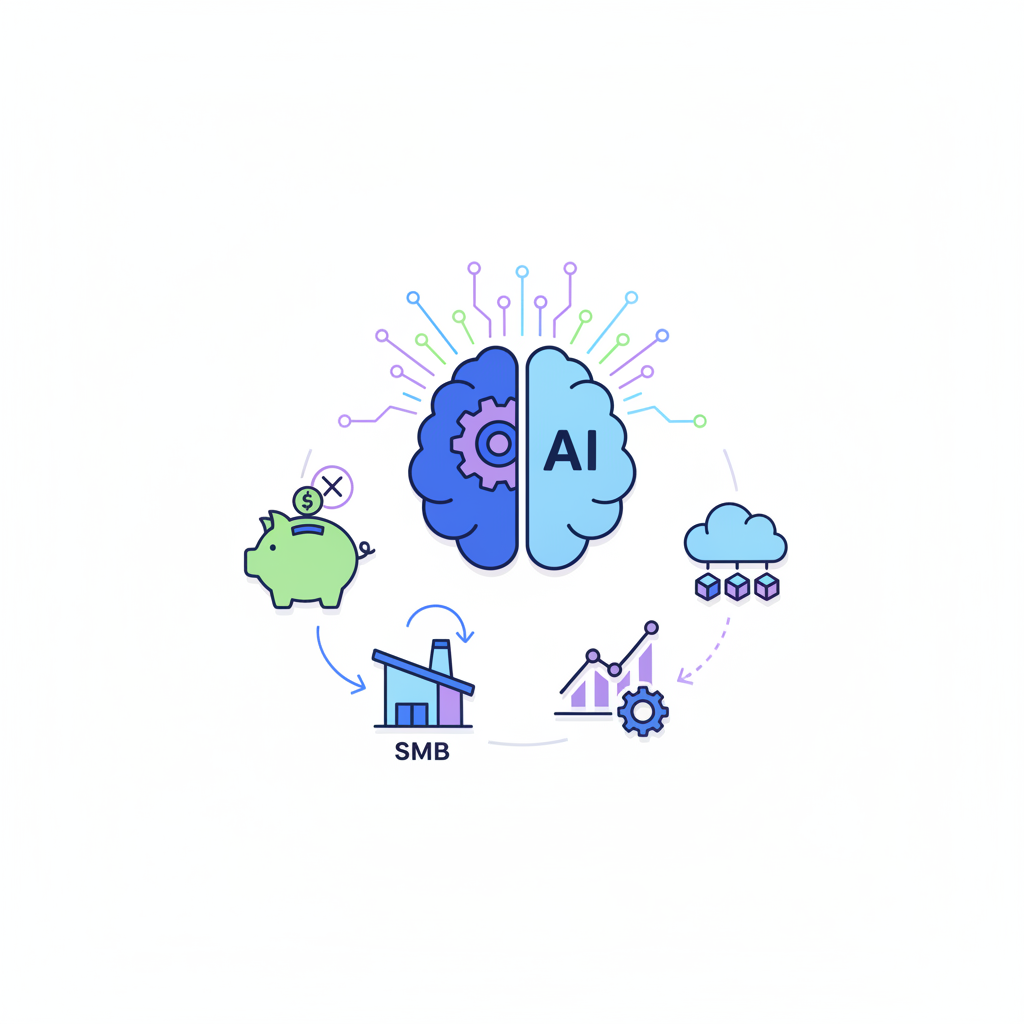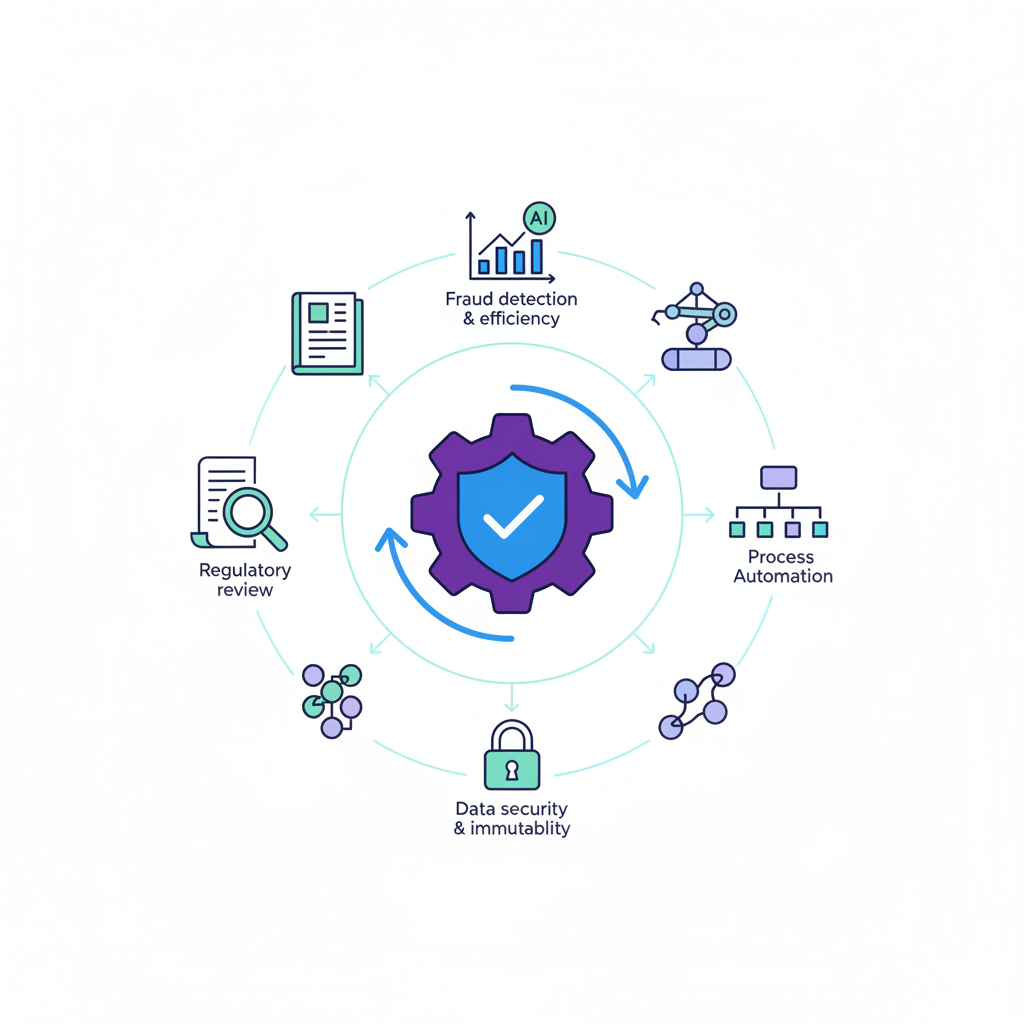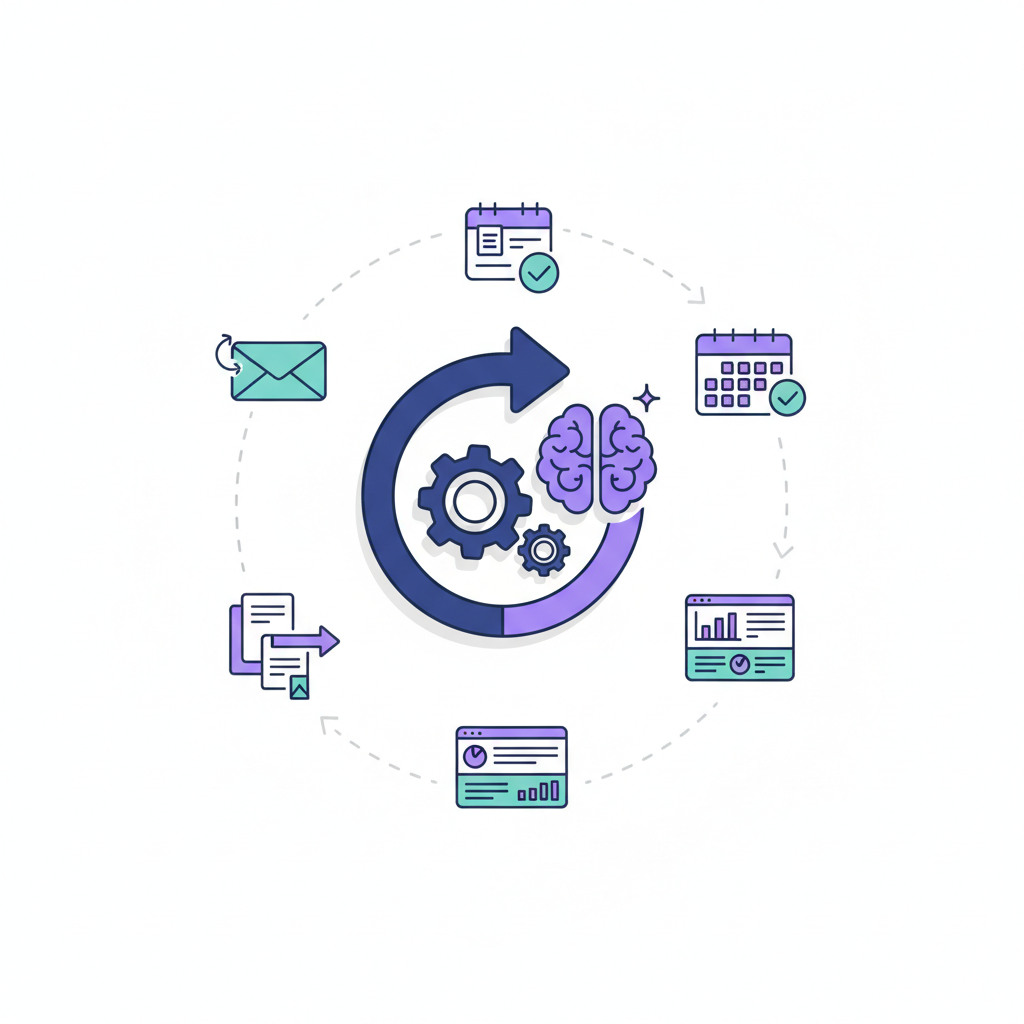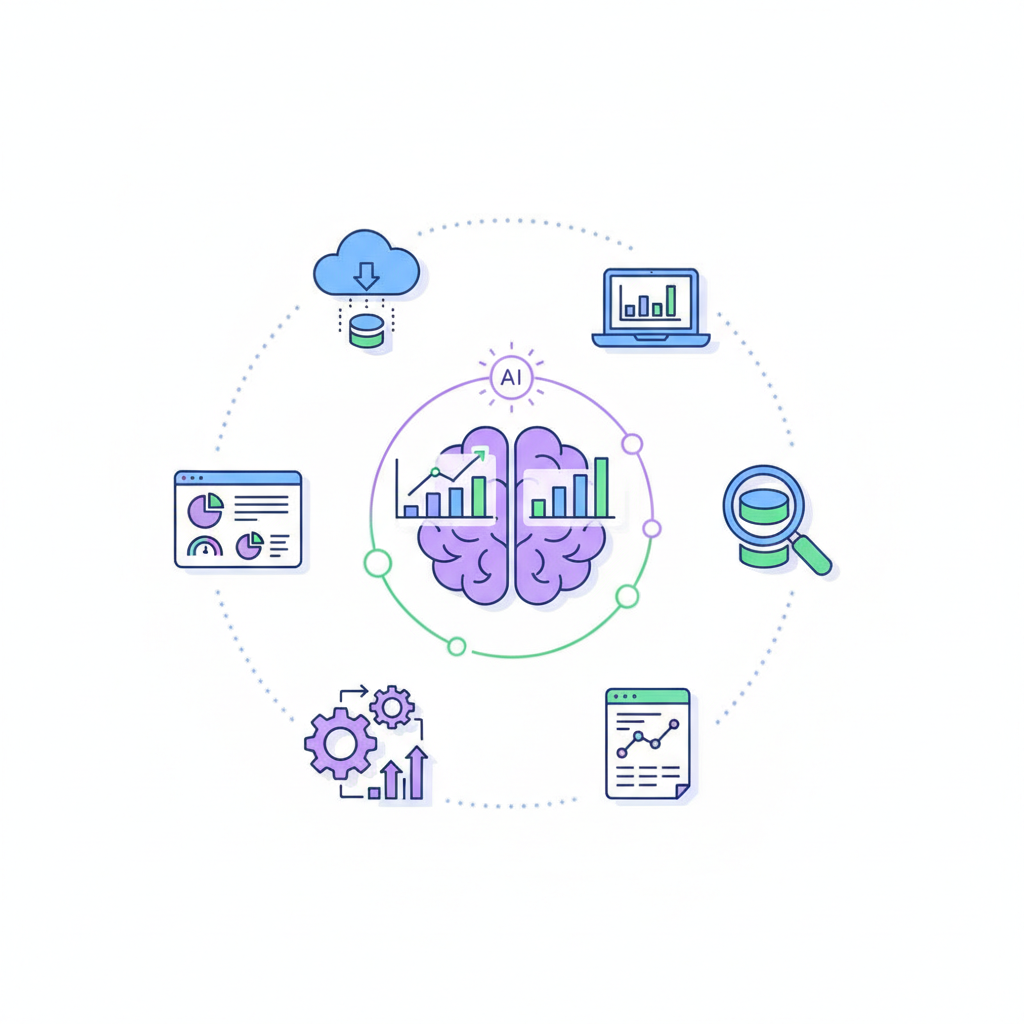How SMBs can adopt AI without big spending
Discover how small and medium businesses can adopt AI affordably. This practical guide covers low-cost tools, quick wins, real-world examples, and step-by-step strategies to integrate AI without breaking the bank.

The AI Revolution is Here: And It's Not Just for Big Business
The artificial intelligence (AI) revolution is no longer a futuristic concept; it's a present-day reality transforming industries at an unprecedented pace. From automating complex tasks to personalizing customer experiences, AI offers a competitive edge that businesses of all sizes are eager to harness. However, for many small and medium-sized businesses (SMBs), the prospect of SMBs adopting AI often feels daunting. There's a pervasive belief that AI for small businesses is an exclusive domain for tech giants with bottomless pockets and vast R&D departments. Many small businesses believe AI adoption requires massive budgets and complex infrastructure, leading to missed opportunities for efficiency and growth. This perception, while understandable, is increasingly outdated. The truth is, the landscape of AI tools and services has evolved dramatically, making it more accessible and affordable than ever before.
This guide will debunk that myth, providing practical, step-by-step strategies for how SMBs can adopt AI without big spending, leveraging affordable tools and smart integration. We aim to show that low-cost AI solutions for small businesses are not only available but can deliver significant returns on investment. We'll cover identifying high-impact use cases, choosing budget-friendly solutions, leveraging existing resources, and building an AI-ready team, all designed for cost-effective SMB AI adoption strategies. By the end of this post, you'll have a clear roadmap to integrate affordable AI for SMBs into your operations, proving that innovation doesn't have to break the bank.
Debunking the Myth: AI Doesn't Require a Fortune
For years, the narrative around AI was dominated by images of bespoke, enterprise-level solutions requiring millions in investment and armies of data scientists. This perception naturally led many SMBs adopting AI to believe it was out of reach. The reality is that this perception stemmed from a time when AI was primarily a research-intensive field, and custom development was the only path. Today, the landscape for AI for small businesses has undergone a radical transformation. We've moved from an era of custom-built, on-premise AI to one dominated by accessible, cloud-based, and often freemium AI services. These advancements have democratized AI, making low-cost AI solutions a tangible reality for businesses of all sizes.
The key to SMBs adopting AI without big spending lies in strategically identifying high-impact, low-cost AI use cases within typical SMB operations. Instead of aiming for a complete overhaul, focus on "quick wins" – specific, repetitive tasks that AI can automate or enhance with minimal setup. Think about areas where human error is common, where data analysis is time-consuming, or where customer interactions could be streamlined. These are prime opportunities for incremental adoption. For instance, automating customer service FAQs, generating marketing copy, or categorizing incoming emails can free up significant employee time and resources.
To guide this approach, we introduce "the 30% rule for AI" for SMBs. This principle suggests that instead of trying to implement AI across every possible business function, SMBs should focus on the most impactful 30% of potential AI applications. These are the areas where AI can yield significant, measurable returns with relatively low investment and effort. By starting small, proving ROI on these targeted applications, and then gradually expanding, small businesses can build confidence, gather internal support, and demonstrate the tangible AI value for SMBs. This iterative approach ensures that every dollar spent on AI is justified, making quick wins the foundation for sustainable SMB AI adoption strategies.
Your Toolkit: Affordable AI Solutions for Small Businesses
Successfully integrating AI into your small business operations doesn't require a massive budget; it requires smart choices and leveraging readily available resources. One of the most effective methods for affordable AI for SMBs is to leverage your existing data. Your CRM, sales records, website analytics, and customer interaction logs are goldmines of information that, when combined with free AI services or freemium AI tools, can unlock powerful insights and automation. Instead of investing in new data infrastructure, focus on connecting your current data sources to AI tools designed for analysis and action. This minimizes initial costs and maximizes the value of what you already have.
To help you navigate the vast array of options, here's a curated list of specific, low-cost AI solutions for small businesses, categorized by common use cases:
- Marketing & Sales:
- AI Writing Assistants (e.g., Jasper, Copy.ai, ChatGPT): Generate blog posts, social media captions, ad copy, and email newsletters quickly. Many offer free tiers or affordable monthly subscriptions.
- AI Image Generators (e.g., Midjourney, DALL-E, Canva AI): Create unique visuals for marketing materials without needing a graphic designer.
- CRM with AI features (e.g., HubSpot CRM Free, Zoho CRM): Automate lead scoring, personalize email outreach, and predict sales trends.
- Email Marketing AI (e.g., Mailchimp with AI subject line suggestions): Optimize open rates and engagement.
- Customer Service:
- Chatbots (e.g., Tidio, ManyChat, Intercom): Handle common customer inquiries 24/7, provide instant answers, and qualify leads. Many integrate directly with websites and social media.
- AI-powered Help Desks (e.g., Zendesk, Freshdesk): Automate ticket routing, suggest responses to agents, and analyze customer sentiment.
- Operations & Productivity:
- Transcription Services (e.g., Otter.ai, Google Recorder): Convert audio to text for meetings, interviews, and content creation. Offers free minutes.
- Scheduling Assistants (e.g., Calendly with AI features, Acuity Scheduling): Automate appointment booking and reduce no-shows.
- Project Management AI (e.g., Asana, Trello with AI integrations): Automate task assignments, predict project timelines, and identify bottlenecks.
- Document Summarization (e.g., tools integrated into Microsoft 365 or Google Workspace): Quickly grasp the essence of long documents.
- Financials:
- Expense Management AI (e.g., Expensify, QuickBooks with AI features): Automate receipt scanning, categorization, and expense reporting.
- Fraud Detection (e.g., Stripe Radar): Built-in AI helps identify and prevent fraudulent transactions for online businesses.
The beauty of these AI tools for SMBs lies in their ease of integration. You don't need a team of developers. Guidance on simple integrations using no-code/low-code platforms like Zapier or Make.com is crucial. These platforms allow you to connect different software applications and automate workflows without writing a single line of code. For example, you can set up a Zapier automation to automatically add new leads from your website form to your CRM and then trigger an AI writing assistant to draft a personalized follow-up email. This approach minimizes IT overhead and allows your existing small business technology stack to become more powerful with AI capabilities, demonstrating true AI integration in small businesses.
A Step-by-Step Guide to Cost-Effective AI Adoption for SMBs
Adopting AI doesn't have to be a monumental task. For how SMBs adopt AI effectively and without big spending, a structured, incremental approach is key. This practical guide breaks down the process into five manageable steps, focusing on low-cost AI adoption and maximizing your return on investment.
Step 1: Identify Your Pain Points & Opportunities
Before diving into tools, take a critical look at your business operations. Where are the bottlenecks? What tasks are repetitive, time-consuming, or prone to human error? Where do you see opportunities for significant returns, even with small improvements?
- Framework/Checklist:
- List 3-5 most time-consuming administrative tasks.
- Identify areas where customer inquiries are frequent and repetitive.
- Pinpoint marketing content creation that drains resources.
- Assess data analysis needs that are currently unmet or manual.
- Consider areas where personalization could boost customer engagement.
- Look for processes that could benefit from automation to reduce errors.
This assessment helps pinpoint specific areas where AI transformation for SMBs can deliver tangible benefits, setting the stage for quick wins.
Step 2: Start Small with a Pilot Project (Quick Wins)
Resist the urge to implement AI everywhere at once. Choose one specific, manageable task identified in Step 1 for your first pilot project. The goal here is to demonstrate value quickly and build internal confidence.
- Example: Instead of automating all customer service, start with an AI chatbot to answer the top 10 most common FAQs on your website.
- Clear Success Metrics: Define what success looks like for this pilot. For the chatbot example, metrics could include: reduction in customer service calls for FAQs, increased website engagement, or faster response times. This focus on quick wins is vital for small business AI adoption.
Step 3: Research & Select the Right Budget-Friendly Tool
With your pilot project defined, it's time to find the right tool. Refer back to the "Your Toolkit" section for ideas on affordable AI for SMBs.
- Considerations:
- Ease of Use: Prioritize tools with intuitive interfaces that require minimal technical expertise.
- Integration: Can it easily connect with your existing software (CRM, website, email)? Look for no-code/low-code integration options.
- Scalability: Does it offer a free or low-cost tier that can grow with your needs?
- Support: What kind of customer support or community resources are available?
- Cost: Compare free trials, freemium models, and tiered pricing to ensure it aligns with your budget.
Step 4: Implement, Test, and Iterate
Once you've selected a tool, follow its setup instructions. This usually involves connecting it to your data sources and configuring its specific functions.
- Setup: Dedicate time to properly configure the AI tool according to your pilot project's requirements.
- Testing: Thoroughly test the AI's performance with real-world scenarios. For a chatbot, ask it all your FAQs. For a content generator, review its output critically.
- Gather Feedback: Involve your team and, if applicable, a small group of customers in the testing phase. Their feedback is invaluable for fine-tuning.
- Iterate: AI is not a "set it and forget it" solution. Be prepared to make adjustments, refine parameters, and improve its performance based on feedback and results.
Step 5: Measure ROI and Plan for Incremental Scaling
After a defined period (e.g., 1-3 months), evaluate the success of your pilot project against your initial metrics.
- Quantify Benefits: Did the chatbot reduce calls by 20%? Did the AI writing assistant save 10 hours of content creation per week? Translate these into monetary savings or revenue gains.
- Justify Further Adoption: Use the proven ROI to justify expanding the AI's scope or investing in another SMB AI adoption strategies project. This incremental scaling ensures that every step of your AI transformation for SMBs remains budget-conscious and data-driven.
Overcoming Challenges & Building an AI-Ready Team
The journey of AI integration in small businesses isn't without its hurdles. Beyond the technical aspects, SMBs often face internal skepticism, concerns about data privacy, and the challenge of upskilling their workforce. Addressing these proactively is crucial for successful SMB AI adoption strategies.
One common challenge is internal skepticism. Employees might fear job displacement or view AI as overly complex. To counter this, communicate the benefits of AI clearly and transparently. Emphasize that AI is a tool to augment human capabilities, not replace them. Frame it as a way to eliminate tedious, repetitive tasks, allowing employees to focus on more creative, strategic, and fulfilling work. Share early AI success stories from your pilot projects to demonstrate tangible improvements in efficiency and productivity. For instance, show how an AI-powered scheduling tool frees up administrative staff to engage more directly with clients, enhancing customer relationships. This shift in focus is key to managing the AI workforce impact.
Data privacy and security are paramount, especially when using cloud-based AI tools. While many small business technology providers offer robust security, SMBs must still exercise due diligence.
- Basic Data Security Considerations:
- Choose Reputable Vendors: Opt for AI tools from established companies with clear privacy policies and security certifications (e.g., SOC 2, ISO 27001).
- Understand Data Usage: Read the terms of service carefully to understand how your data will be used, stored, and protected. Ensure it aligns with your industry's regulations (e.g., GDPR, CCPA).
- Minimize Data Sharing: Only feed the AI tools the data they absolutely need to perform their function. Avoid sharing sensitive customer information unnecessarily.
- Strong Access Controls: Implement strong passwords and multi-factor authentication for all AI tool accounts.
- Regular Audits: Periodically review your AI tool usage and data practices.
Training staff for new AI tools doesn't require significant investment. Leverage a multi-pronged approach:
- Internal Champions: Identify tech-savvy employees who are enthusiastic about AI. Train them thoroughly and empower them to become internal experts and peer-to-peer trainers. This fosters a culture of learning and reduces reliance on external consultants.
- Free Online Tutorials: Most modern AI tools offer extensive online documentation, video tutorials, and knowledge bases. Encourage employees to utilize these self-paced learning resources.
- Vendor Resources: Many AI tool providers offer free webinars, onboarding sessions, and customer support that can be invaluable for initial training.
- Hands-on Practice: Provide opportunities for employees to experiment with the AI tools in a low-stakes environment. Practical experience is the best teacher.
Concrete examples demonstrate the power of this approach. Imagine a local bakery using a simple AI chatbot on its website to answer questions about opening hours, daily specials, and custom cake orders. This frees up staff from answering repetitive phone calls, allowing them to focus on baking and in-store customer service. Or consider an e-commerce store leveraging an AI writing assistant to generate unique product descriptions for hundreds of items, saving countless hours and ensuring consistent branding. These examples highlight how SMB AI adoption strategies can lead to tangible benefits without a massive financial outlay, providing valuable AI adoption data for future decisions.
Real-World Examples: SMBs Thriving with Budget-Friendly AI
The true testament to SMB AI adoption strategies lies in the success stories of businesses that have embraced these technologies without breaking the bank. These AI for small businesses case studies demonstrate that affordable AI for SMBs examples are not just theoretical but are actively transforming operations and driving growth.
Example 1: The Local Retail Store – "Boutique Blooms"
Boutique Blooms, a small flower shop specializing in unique arrangements and local deliveries, faced a common challenge: their staff spent significant time answering repetitive customer inquiries over the phone and via email. Questions about delivery zones, flower availability, and care instructions were constant, pulling staff away from creating arrangements and serving in-store customers.
- Problem Solved: High volume of repetitive customer service inquiries.
- Tool Used: Tidio (freemium chatbot platform).
- Implementation: Boutique Blooms integrated Tidio's AI chatbot onto their website and Facebook Messenger. They trained the chatbot with FAQs about delivery, product care, and store hours. The chatbot was also configured to collect basic customer information (name, inquiry type) before escalating complex requests to a human agent during business hours.
- Measurable Impact: Within three months, the shop reported a 30% reduction in phone calls related to FAQs. Customer satisfaction improved due to instant answers, and staff could dedicate more time to creative tasks and personalized in-store service. The cost was minimal, leveraging Tidio's free tier and then a low-cost paid plan as their needs grew. This is a prime example of low-cost AI solutions for small businesses delivering immediate value.
Example 2: The Small Marketing Agency – "Creative Spark Marketing"
Creative Spark Marketing, a boutique agency serving local businesses, struggled with the time and cost associated with generating diverse content for their clients. Crafting unique blog posts, social media updates, and ad copy for multiple clients was a labor-intensive process, limiting their capacity for new business.
- Problem Solved: Time-consuming and costly content creation.
- Tools Used: Jasper (AI writing assistant) and Canva AI (AI image generator).
- Implementation: The agency subscribed to an affordable Jasper plan and integrated Canva AI into their design workflow. They used Jasper to generate initial drafts for blog posts, brainstorm social media captions, and create variations of ad copy. Canva AI was used to quickly generate unique background images or design elements for social media posts and website banners.
- Measurable Impact: Content creation time was reduced by an estimated 40%, allowing the agency to take on more clients without increasing staff. The quality and diversity of content also improved, leading to higher client satisfaction and engagement. The monthly subscription costs for these tools were significantly less than hiring additional content creators or designers, showcasing effective AI transformation for SMBs.
Example 3: The Service-Based SMB – "Precision Plumbing & HVAC"
Precision Plumbing & HVAC, a small team of technicians, faced operational inefficiencies due to manual scheduling, dispatching, and client communication. Missed appointments, scheduling conflicts, and delayed follow-ups were common, impacting customer satisfaction and revenue.
- Problem Solved: Inefficient scheduling, dispatching, and client management.
- Tool Used: Acuity Scheduling (with AI-powered smart scheduling features) integrated with Zapier for automated follow-ups.
- Implementation: They implemented Acuity Scheduling, allowing clients to book appointments online based on technician availability and service type. Acuity's smart scheduling features helped optimize routes and minimize travel time. Using Zapier, they automated sending AI-generated personalized appointment reminders (via text and email) and post-service follow-up messages, asking for feedback or suggesting maintenance.
- Measurable Impact: Missed appointments decreased by 25%, and technician efficiency improved by 15% due to optimized routes. Customer satisfaction scores rose due to proactive communication. The combined cost of Acuity and Zapier's basic plans was a fraction of what they saved in reduced operational waste and improved client retention. These affordable AI for SMBs examples highlight how even traditional businesses can leverage AI for significant gains.
These examples underscore that SMB AI adoption strategies are not about grand, expensive overhauls, but about targeted, smart applications of readily available, budget-friendly AI tools to solve specific business problems and drive measurable results.
FAQ: Your Questions About Affordable AI for SMBs Answered
Navigating the world of AI can bring up many questions, especially for small businesses looking to adopt it without a hefty budget. Here, we address some of the most common inquiries about affordable AI for SMBs and AI for small businesses.
What's the absolute minimum an SMB needs to start with AI?
The absolute minimum an SMB needs to start with AI is a clear understanding of a single, repetitive pain point in their business, access to a computer with internet, and a willingness to explore free AI services or freemium tools. You don't need a data scientist or a massive IT infrastructure. Many AI tools offer free trials or robust free tiers that allow you to experiment and see tangible results before committing any financial resources. Start with a simple task like automating email responses, generating social media captions, or creating basic chatbots. The investment is primarily time and curiosity, not capital. This makes SMB AI adoption incredibly accessible.
How can I ensure data privacy when using cloud-based AI tools?
Ensuring data privacy is critical. First, always choose reputable AI vendors with transparent privacy policies and strong security measures (e.g., encryption, multi-factor authentication). Read their terms of service to understand how your data is collected, stored, and used. Second, only provide the AI tool with the minimum necessary data to perform its function. Avoid uploading sensitive customer information if it's not directly required. Third, ensure compliance with relevant data protection regulations (like GDPR or CCPA) that apply to your business and customers. Finally, regularly review your data access permissions and consider data anonymization where possible. This is a key aspect of responsible small business technology adoption.
Is AI only for tech-savvy businesses, or can anyone adopt it?
Absolutely anyone can adopt AI, regardless of their tech-savviness. The rise of no-code and low-code AI platforms has democratized access to these powerful tools. Many modern AI solutions are designed with intuitive, user-friendly interfaces that require no coding knowledge. If you can use a spreadsheet or navigate a website, you can likely learn to use many of the AI tools for SMBs available today. The key is to start with simple applications and gradually build your comfort level. Focus on the problem you want to solve, not the underlying technology.
How long does it typically take to see ROI from low-cost AI initiatives?
With low-cost AI solutions, especially those focused on "quick wins," you can often see a return on investment (ROI) surprisingly fast – sometimes within weeks or a few months. Because you're targeting specific, high-impact pain points (like reducing customer service calls or speeding up content creation), the benefits are often immediate and measurable. For example, if an AI chatbot reduces the time your staff spends on FAQs by 10 hours a week, that's an immediate, quantifiable saving. The key is to define clear success metrics before you start, allowing you to track and demonstrate that ROI effectively.
What are the biggest mistakes SMBs make when adopting AI on a budget?
The biggest mistakes include:
- Trying to do too much at once: Overwhelm leads to abandonment. Start small.
- Not defining clear goals: Without specific problems to solve, AI becomes a solution looking for a problem.
- Ignoring employee training: Lack of adoption by staff will render even the best AI tool useless.
- Failing to measure results: Without tracking ROI, you can't justify continued investment or expansion.
- Overlooking data privacy: Neglecting security can lead to costly breaches and reputational damage.
- Choosing overly complex tools: Opt for user-friendly solutions that fit your team's current skill level.
Can AI replace my employees, or does it augment their roles?
For SMBs, AI is overwhelmingly an augmentation tool, not a replacement. Its primary purpose is to automate repetitive, mundane, or data-intensive tasks, freeing up your employees to focus on higher-value activities that require human creativity, critical thinking, empathy, and strategic decision-making. For example, an AI writing assistant can draft content, but a human editor refines it for tone and brand voice. A chatbot can answer FAQs, but a human agent handles complex customer issues. The AI workforce impact in small businesses is generally about making employees more productive, efficient, and engaged in meaningful work, leading to better job satisfaction and overall business growth.
Your Journey to Smart, Affordable AI Adoption Starts Now
The message is clear: SMBs adopting AI is no longer a luxury reserved for large corporations; it's an accessible necessity for staying competitive in today's rapidly evolving market. We've debunked the myth that AI requires massive budgets, highlighting the abundance of low-cost AI solutions and affordable AI for SMBs readily available. The key takeaways from this guide are simple yet powerful: start small, identify your most pressing pain points, leverage budget-friendly tools, focus on quick wins to prove value, and empower your team through accessible training.
The future is undeniably AI-powered, and small businesses, with their inherent agility and ability to adapt quickly, are perfectly positioned to embrace this transformation effectively and affordably. By strategically integrating AI into specific areas of your operations, you can unlock significant efficiencies, enhance customer experiences, and drive growth without the prohibitive costs often associated with advanced technology. This AI transformation for SMBs is within your reach.
Don't let perceived barriers hold your business back. Your journey to smart, small business AI adoption starts now. Identify just one pain point in your business today – perhaps a repetitive customer inquiry or a time-consuming content creation task – and explore a budget-friendly AI solution to address it. Take the first step; the benefits of AI for small businesses are waiting to be realized. Consider downloading a 'Budget-Friendly AI Readiness Checklist' to map out your first steps, or dive into exploring a specific tool category mentioned in this guide. The power of AI is yours to harness.
Featured Tools

10Web is an AI-powered WordPress platform that offers automated website building, hosting, and optimization with AI assistance for content and image generation.

A global creative platform connecting businesses with freelance designers for custom graphic design projects.

A1.art is an AI art generator that transforms text descriptions into unique digital artworks across various styles.

Acquire.io is a customer engagement platform offering live chat, AI chatbots, co-browsing, and video chat to enhance customer support and sales.

A customer experience automation platform combining email marketing, marketing automation, and CRM with AI-powered personalization.
Top AI Categories
Related Articles

AI for financial services: compliance & automation
Discover how AI is revolutionizing financial services through advanced compliance automation, real-time fraud detection, regulatory reporting, and hyper-personalized customer experiences. Explore the future of intelligent, efficient, and secure banking.

Top 10 AI tools for Enterprise Workflow Automation
Enterprises are turning to AI-powered workflow automation to eliminate manual processes, cut costs, and accelerate strategic execution. Unlike traditional automation, AI can handle unstructured data and make intelligent decisions, offering profound benefits across finance, HR, and IT. This guide curates the top 10 AI tools—from RPA leaders like UiPath and Automation Anywhere to iPaaS solutions like Workato and low-code platforms like Microsoft Power Automate—providing a blueprint for building a more agile and resilient organization.

Top 10 AI tools for Business Analytics
In the data-driven world, AI is transforming business analytics from descriptive reporting to predictive strategy. These AI-powered tools leverage machine learning and NLP to automatically discover hidden patterns, forecast future outcomes, and allow non-technical users to query data in plain English. The top 10 platforms, including industry leaders like Microsoft Power BI and Tableau (with Einstein), and AI-native tools like ThoughtSpot and Akkio, democratize access to powerful insights. By adopting these solutions, businesses can turn overwhelming raw data into their most valuable strategic asset, accelerating decision-making and driving competitive advantage.